
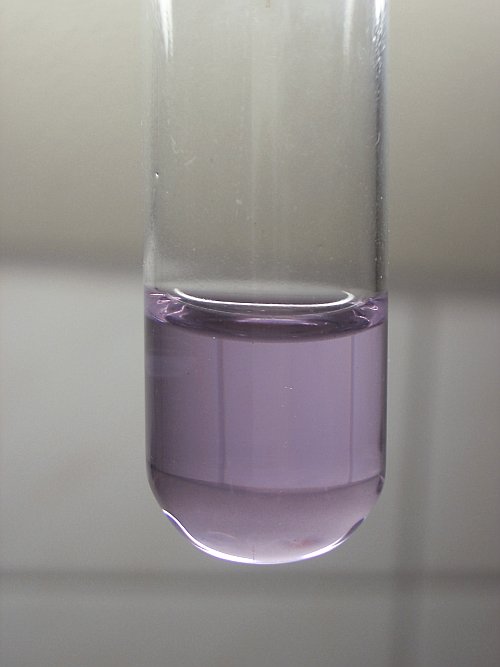

Aqueous solutions and precipitates of neodymium
Neodymium only exists in the +3 oxidation state or in the metallic state. This is the typical behavior for all lanthanides. Of all lanthanide ions in the +3 oxidation state, neodymium has the strongest color. Neodymium ions have a beautiful purple/lavender color, which can be observed already at moderate concentration. However, the color is not nearly as strong as the color of many transition metal ions, such as chromium (III), titanium (III). Even ions like copper (II) have a stronger color.
![]()
Oxidation state +3
Below follows a picture of an acidified solution of neodymium (III) chloride, which is clear and nice purple/lavender under TL-light. The color is caused by the Nd3+(aq) ions, present in this solution. The concentration of the solution is moderately high, it contains a few mass percents of neodymium.

When a solution of sodium hydroxide is added to this liquid, then a light purple/blue precipitate of Nd(OH)3 is formed. Neodymium forms a purely basic hydroxide, which does not dissolve in excess solution of sodium hydroxide. The left picture shows a freshly prepared precipitate, which is somewhat spongy. The right picture shows the same precipitate, after shaking it. The color of this hydroxide is quite strong, compared to the color of e.g. praseodymium hydroxide or erbium hydroxide. In solution, the color of the Nd3+ ions is stronger, but in its hydroxide precipitate, the color also is stronger.
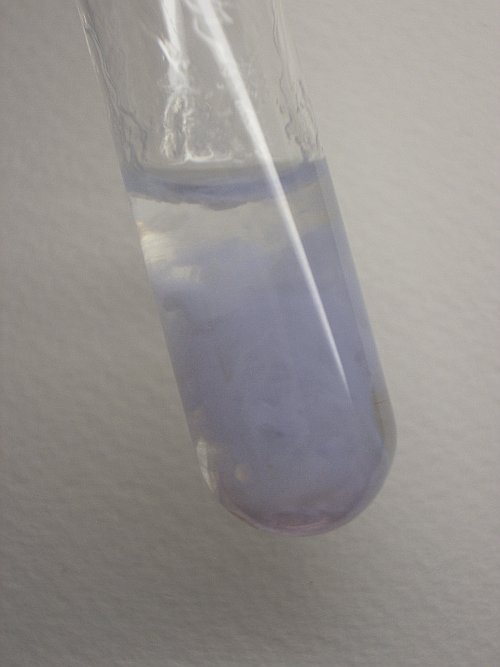
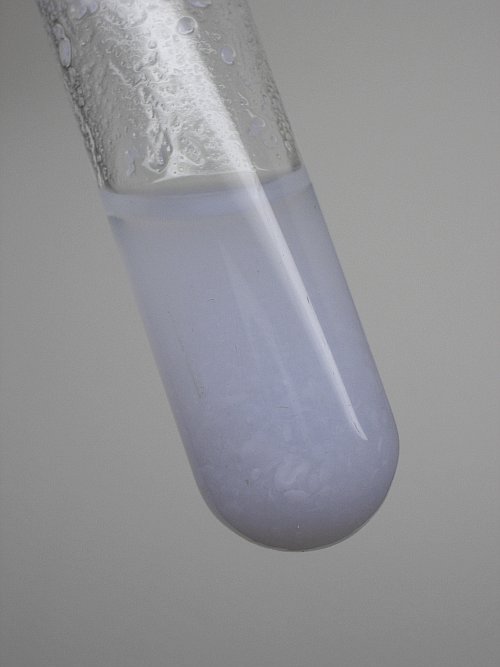
The color of solutions of neodymium are very strongly dependent on the light source, used for viewing the solutions. This is due to the narrow bands in the absorption spectrum of neodymium ions in aqueous solution. Viewing such solutions under light sources with gaps in their emission spectrum may lead to completely different perception of their color.
The following pictures show solutions of neodymium sulfate, neodymium nitrate and neodymium chloride in dilute sulphuric acid, dilute nitric acid and dilute hydrochloric acid. The top picture is made in daylight, the bottom picture is made under the light of a fluorescent energy saving lamp.
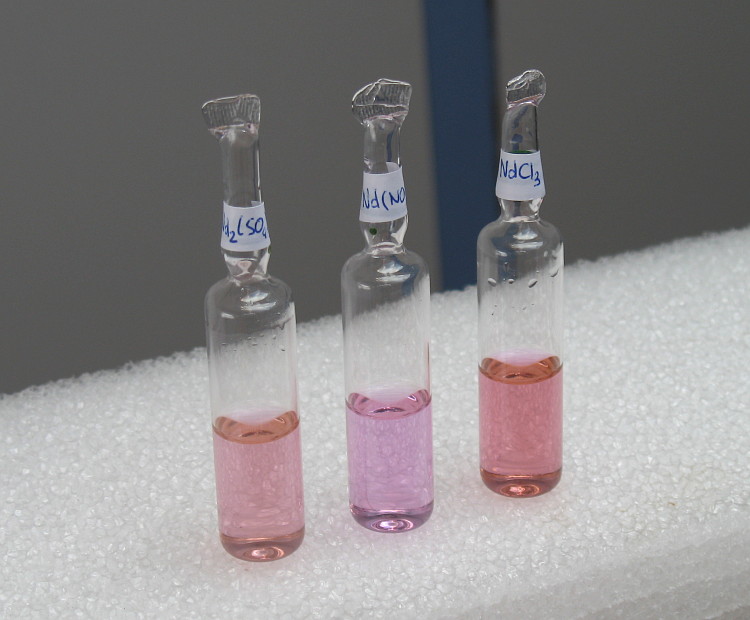
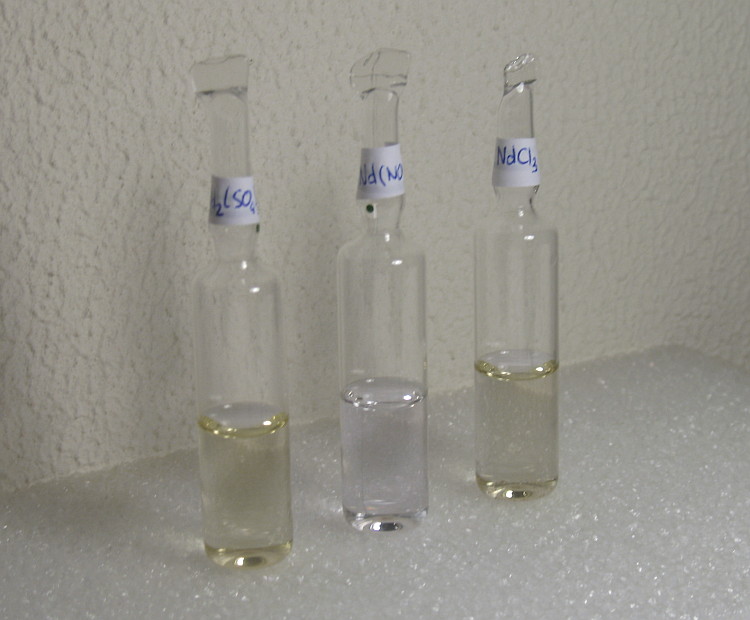
back to solutions/precipitates main page
back to miscellaneous main page